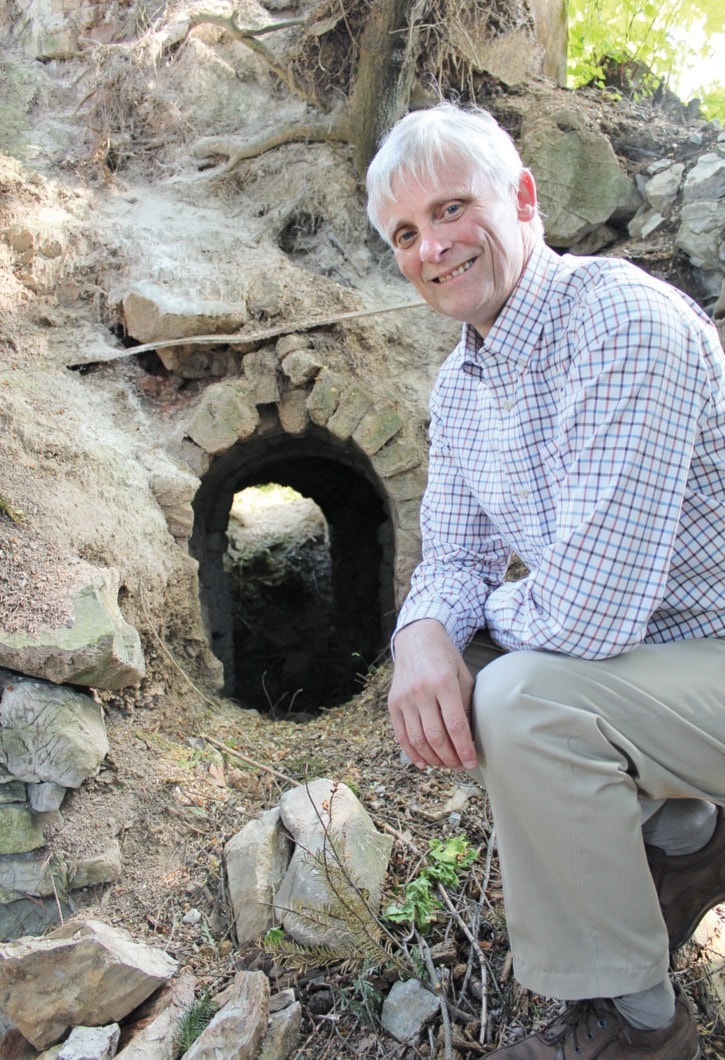Standing just under seven metres tall, with a base four metres wide, View Royal’s historic lime kiln is a massive structure.
It’s been marked for preservation by town council, who have ponied up $25,000 to start the process.
Silica Brick and Lime Company Ltd., owned by Thomas Atkins, built the kiln circa 1908 and used it up until sometime in the 1940s. Since then it has sat undisturbed on a parcel of land on Hart Road, while development has gone on all around it.
The problem is, in its current state, it’s falling apart and hard to see from the road. There’s also no access to the public. The bricks are getting a little crumbly and the sheet metal that surrounds the chimney has corroded to the point it has mostly fallen off the structure. It is surrounded by trees and bush. One tree has even grown up through the kiln and out the chimney.
Now, with the help of a heritage consultant and View Royal’s financial commitment, the kiln will receive much needed tending and be opened up for the public to visit and learn from.
“It’s amazing it survived like this at all, if you left it much longer it wouldn’t,” said Donald Luxton, of Donald Luxton and Associates Inc. “So (they need to) go in, stop the growth of the trees, remove biological matter, start the conservation process. And then if it takes five, 10, 15 years – whatever it takes, work towards the goal.”
The kiln was used to process limestone, common in the area, into a powered lime, a primary component in mortar at the time.
The kiln would heat the limestone, in a process called calcination, until it became reduced to quicklime (calcium oxide).
Water is then added which turns the lime into a powder, ready to be used in mortar, plaster and other products.
There were numerous lime kilns scattered throughout Greater Victoria, before industrialized methods of lime production and the advent of Portland cement (an improved product that continues to be used today) made small scale operations financially unsustainable.
Now they are hard to find, especially one’s that are still standing.
“Absolutely rare. There’s very, very few of them around,” said Luxton, who hopes the story of the kiln and the general industrial history of the area can be told to visitors of the site.
Interpretation will be a key element of the refurbish, either through signs, or even more technologically advanced methods such as cellphone apps or QR codes.
“It’s one thing to have the artifact, which is great,” Luxton said, “but the whole point of this is it’s there to tell us something, and that’s why we would go to the trouble of conserving it.”
Counc. John Rogers spearheaded the conservation process and said he applauds the rest of council for understanding the significance of the site.
“It’s our background, what we celebrate and why View Royal exists,” said Rogers. “It’s such a rare structure, being intact like this, it gives us an opportunity, and the region an opportunity to remember its history.”
news@goldstreamgazette.com
